Introduction


India, officially the Republic of India (ISO: Bhārat Gaṇarājya), is a country in South Asia. It is the seventh-largest country by area; the most populous country as of June 2023; and from the time of its independence in 1947, the world's most populous democracy. Bounded by the Indian Ocean on the south, the Arabian Sea on the southwest, and the Bay of Bengal on the southeast, it shares land borders with Pakistan to the west; China, Nepal, and Bhutan to the north; and Bangladesh and Myanmar to the east. In the Indian Ocean, India is in the vicinity of Sri Lanka and the Maldives; its Andaman and Nicobar Islands share a maritime border with Thailand, Myanmar, and Indonesia. (Full article...)
Selected pictures
The film was made with a budget of ₹28 crore ($4.6 million). Harsha Vardhan wrote the film's dialogues, while Anup Rubens composed the film's music. P. S. Vinod handled the film's cinematography and Prawin Pudi edited the film. Production began on 3 June 2013. Principal photography began on 7 June 2013 and was shot in and around Hyderabad, Coorg and Mysore till mid April 2014. (Full article...)
Nagapattinam (nākappaṭṭinam, previously spelt Nagapatnam or Negapatam) is a town in the Indian state of Tamil Nadu and the administrative headquarters of Nagapattinam district. The town came to prominence during the period of Medieval Cholas (9th–12th century CE) and served as their important port for commerce and east-bound naval expeditions. The Chudamani Vihara in Nagapattinam constructed by the Srivijayan king Sri Mara Vijayattungavarman of the Sailendra dynasty with the help of Rajaraja Chola I was an important Buddhist structure in those times. Nagapattinam was settled by the Portuguese and, later, the Dutch under whom it served as the capital of Dutch Coromandel from 1660 to 1781. In November 1781, the town was conquered by the British East India Company. It served as the capital of Tanjore district from 1799 to 1845 under Madras Presidency of the British. It continued to be a part of Thanjavur district in Independent India. In 1991, it was made the headquarters of the newly created Nagapattinam District. Nagapattinam is administered by a Special grade municipality covering an area of 17.92 km2 (6.92 sq mi) and had a population of 102,905 as of 2011.
A majority of the people of Nagapattinam are employed in sea-borne trading, fishing, agriculture and tourism. Kayarohanaswami Temple and Soundararajaperumal Temple, Nagapattinam are the major Hindu pilgrimage sites. Nagapattinam is the base for tourism for Sikkal, Velankanni, Poompuhar, Kodiakkarai, Vedaranyam, and Tharangambadi. Roadways is the major mode of transport to Nagapattinam, while the city also has rail and sea transport. (Full article...)
The Royal Calcutta Turf Club (RCTC) is a horse racing organisation which was founded in 1847 in Calcutta, British India (now Kolkata). Horse events and sports were initially organised for the British cavalry at Akra before they were moved to the Maidan. The RCTC became the foremost horse-racing organization in India during the British Raj. At one time it was the governing body for nearly all racecourses in the subcontinent, defining and applying the rules governing the sport. During its heyday, RCTC-organised races were among the most important social events of the bigwigs' calendar and were opened by the Viceroy of India. Still a private club, the RCTC operates Kolkata Race Course in the Maidan.
The club also held polo matches during the late 19th century, and hosted English-style gambling; the Calcutta Derby Sweeps, organised by the RCTC, was the world's largest sweepstake in the 1930s. After the closure of the Tollygunge racecourse, a new racecourse was opened by the club in Barrackpore during the 1920s; it was unsuccessful due to poor attendance. Grandstands were built at the Maidan racecourse; Kolkata Race Course had three in 2020, including a three-tier main grandstand. (Full article...)
Fasana-e-Azad (Urdu: فسانۂ آزاد; transl. The Adventures of Azad, also romanized as Fasana-i-Azad) is an Urdu novel by Ratan Nath Dhar Sarshar. It was serialized in Avadh Akhbar between 1878 and 1883 before it was published in four large volumes by the Nawal Kishore Press. The story follows a wandering character named Azad and his companion, Khoji, from the streets of late-nineteenth-century Lucknow to the battlefields of the Russo-Turkish War (1877–1878) in Constantinople and Russia. The work's status as a novel has been debated, but it is thought by most scholars to be one of the first novels (or a proto-novel) in Urdu.
Sarshar conceived of writing Fasana-e-Azad after the success of the articles he contributed to Avadh Akhbar under the title "Zarafat" ("Wit and Humour"). Perennially popular, Fasana-e-Azad has been a subject of study by literary critics as the first Urdu novel and for its influence on the literary form's later development. It is noted for its colourful descriptions of Lucknow, its people, and its culture. (Full article...)
Bhikshatana (Sanskrit: भिक्षाटन; Bhikṣāṭana; literally, "wandering about for alms, mendicancy") or Bhikshatana-murti (Bhikṣāṭanamūrti) is an aspect of the Hindu god Shiva as the "Supreme mendicant" or the "Supreme Beggar". Bhikshtana is depicted as a nude four-armed man adorned with ornaments who holds a begging bowl in his hand and is followed by demonic attendants and love-sick women.
Bhikshatana is considered a gentler form of Shiva's fierce aspect Bhairava and a gentle phase between Bhairava's two gruesome forms, one of which decapitates one head of the four headed god Brahma and the other of which kills the god Vishnu's gatekeeper. Bhikshatana is the form of Bhairava that Shiva assumes to atone for his sin of severing Brahma's fifth head. He wanders the universe in the form of a naked Kapali mendicant, begging for alms with Brahma's kapala (skullcup) as his begging bowl, until his sin is expiated upon reaching the holy city of Varanasi. (Full article...)
The director Rahi Anil Barve began writing the script based on a story a friend had told him about in 1993, by Marathi writer Narayan Dharap. He wrote the first draft in 1997, when he was 18 years old. From 2009 to 2010, he created a 700-page storyboard for the film. It was optioned by seven production companies who backed out and went on the floors (went into production) three times. It was first shot in 2012 but after editing, Barve and Shah were not satisfied. The film was then re-written and re-shot with filming completed in May 2015. Pankaj Kumar served as the director of photography while Sanyukta Kaza was its editor. Jesper Kyd composed the original score while Ajay–Atul composed one song. (Full article...)
Rudaali was a critical and unexpected commercial success. Particular critical praise was directed at Kapadia's performance, with further appreciation of the film's script, music, technical achievements, and Lajmi's direction. The film won three National Film Awards, including Best Actress for Kapadia, and was nominated for three Filmfare Awards, earning Kapadia a Critics Award for Best Performance. Kapadia won Best Actress honours at the 8th Damascus International Film Festival and the 38th Asia-Pacific Film Festival, where Hazarika was awarded for his music. The film was selected as the Indian entry for Best Foreign Language Film at the 66th Academy Awards, but was not nominated. (Full article...)
The river Ghaghara joins Ganga a short distance away from the village, near Revelganj. The Sone River also joins Ganga about a few kilometres away from Chirand. About 2.5 kilometres (1.6 mi) to the north of the mound there is a dry river bed which is inferred as one of the meandering dry loops of the Gandaki River. Thus, there are four rivers in the vicinity of Chirand. The village has undergone erosion due to which the mound abutting the Ganga River bank is exposed, revealing brick features and potsherds. On the top of the mound there is a mosque, which was built by Sultan Abul Muzaffar Hussain Shah of Bengal in 1503 AD. This mosque reveals ruins of pilasters of Hindu temples. (Full article...)
The film was conceived by Singh and written by Sudip Sharma, who were inspired by some real-life honour killing murder cases. The soundtrack album was composed by Sanjeev-Darshan, Bann Chakraborty, Abhiruchi Chand, Ayush Shrestha, Savera Mehta and Samira Koppikar. Arbind Kannabiran served as the film's cinematographer and Jabeen Merchant was its editor. (Full article...)
News
- 18 July 2024 – Naxalite–Maoist insurgency
- Two Indian soldiers are killed and four others are injured in an IED attack by Maoists in Chhattisgarh, India. (The Hindustan Times)
- 17 July 2024 –
- Comoros-flagged oil tanker Prestige Falcon capsizes off the coast of Oman. The Indian Navy rescues nine crew members, with seven others missing. (AP)
- 13 July 2024 –
- The Guardia di Finanza frees 33 Indian farm workers from exploitative conditions in Verona, Veneto, Italy, and seizes nearly €500,000 (US$545,000) from two Indian individuals accused of charging workers €17,000 ($18,500) each for permits. (AP)
- 8 July 2024 – India–Russia relations
- Indian Prime Minister Narendra Modi visits Moscow, Russia, for the first time since the start of the Russian invasion of Ukraine. (Al Jazeera)
- 3 July 2024 – 2024 India-Bangladesh floods
- At least sixteen people are killed and more than 300,000 others are displaced by floods and landslides in Assam and Arunachal Pradesh, India. (The Independent)
Did you know...
- ... that Abdul Ghani Azhari wrote Qadim Tarikh-e-Gujjar in Urdu, detailing the ancient history of Gujjars in India?
- ... that the horse Sardar was gifted to Jacqueline Kennedy during her 1962 goodwill tour of Pakistan?
- ... that Chicago Radio public address systems were used extensively by the pro-independence Indian National Congress during the British Raj?
- ... that the Indian politician Diwan Chaman Lall failed to get rid of the painting Nude of Indira?
- ... that after activist Aakar Patel was prevented from travelling abroad, a court asked the director of India's Central Bureau of Investigation to apologise?
- ... that Wankaner's Ranjit Vilas Palace in Gujarat, India, features Venetian Gothic, Italianate, Mughal and Rajput styles?
Topics related to India
Timeline of Indian history, Indus Valley Civilisation, Dholavira, Science and technology in ancient India, Meluhha, Aryan invasion theory, Out of India theory, Greek conquests in India, Indian maritime history, Maurya Empire, Ashoka, Shunga Empire, Hoysala Empire, Vijayanagara, Satavahana dynasty, Indo-Greek Kingdom, Indo-Scythians, Indo-Parthian Kingdom, Kushan Empire, Western Satraps, Gupta Empire, Chola dynasty, Pala Empire, Islamic incursions in India, Mughal Empire, Maratha Empire, British Raj, East India Company, Governor-General, Viceroy, War of Independence, 1857, Indian independence movement, Indian National Army, Azad Hind, Quit India Movement, Partition of India, History of Republic of India, Non-Aligned Movement, Sino-Indian War, Indo-Pakistani War of 1947–1948, Indo-Pakistani War of 1965, Indo-Pakistani War of 1971, Kargil War, 2001–02 India–Pakistan standoff, Military, Demographic
Law, Hindu law, Constitution, Political parties (Indian National Congress, Bharatiya Janata Party), Foreign relations, Elections, Political divisions, Reservation in India
Government agencies, Legislative branch (Lok Sabha, Rajya Sabha) Executive branch (President & Vice President, Prime Minister & Deputy Prime Minister, Cabinet Ministers, Cabinet Secretary, Election Commission, Foreign Minister; Law enforcement: CBI, CID, Intelligence: IB, RAW), Directorate General of Income Tax Investigation Judicial branch (Supreme Court), Armed Forces (Army, Navy, Air Force, Border Security Force, Coast Guard)
Himalayas, Western Ghats, Eastern Ghats, Indo-Gangetic Plain, Deccan Plateau, Thar Desert, Ganges, Rann of Kutch, Brahmaputra River, Northeast India; Mountains, Valleys, Islands, Rivers; States and union territories, Cities, Districts, Regions, Fauna, Flora
Rupee, Bombay Stock Exchange, National Stock Exchange, Standard of living, Companies, Reserve Bank of India, Energy policy (Solar, Wind, Nuclear), Tourism, Transport (Expressways, Rail transport, Auto rickshaw),
Languages, Standard of living, Religion
Music (Carnatic, Hindustani, Indi-pop), Dance, Languages, Literature, Architecture, Film & TV, Cuisine, Holidays, Folklore, Education, Media, Indian martial arts
Indian Council of Agricultural Research (ICAR), Indian Institute of Astrophysics, National Centre for Software Technology, AIIMS, IISc, IIT, NIT, BITS-Pilani, INRegistry, Indian numbering system, Indian Space Research Organisation, National Internet Exchange of India, ICRISAT, International Institute of Information Technology, Hyderabad
Indian English, Indian nationality law, Numbering system, Indian Space Research Organisation, Telecommunications, National Highways Development Project, Flag, Vehicle registration plates, Indian nationalism, Metrication in India
Categories
Related portals
Religions in India
Indian Subcontinent
Other countries
Wikipedias in Indian languages
- অসমীয়া (Assamese)
- বাংলা (Bengali)
- भोजपुरी (Bhojpuri)
- বিষ্ণুপ্রিয়া মণিপুরী (Bishnupriya Manipuri)
- गोंयची कोंकणी / Gõychi Konknni (Konkani)
- ગુજરાતી (Gujarati)
- हिन्दी (Hindi)
- ಕನ್ನಡ (Kannada)
- कॉशुर/كشميري (Kashmiri)
- मैथिली (Maithili)
- മലയാളം (Malayalam)
- मराठी (Marathi)
- नेपाली (Nepali)
- नेपाल भाषा
- (Newari)
- ଓଡ଼ିଆ (Odiya)
- ਪੰਜਾਬੀ (Punjabi)
- पालि (Pali)
- संस्कृत (Sanskrit)
- ᱥᱟᱱᱛᱟᱲᱤ (Santali)
- سنڌي (Sindhi)
- தமிழ் (Tamil)
- తెలుగు (Telugu)
- ತುಳು (Tulu)
- اردو (Urdu)
Associated Wikimedia
The following Wikimedia Foundation sister projects provide more on this subject:
-
 Commons
Commons
Free media repository -
 Wikibooks
Wikibooks
Free textbooks and manuals -
 Wikidata
Wikidata
Free knowledge base -
 Wikinews
Wikinews
Free-content news -
 Wikiquote
Wikiquote
Collection of quotations -
 Wikisource
Wikisource
Free-content library -
 Wikiversity
Wikiversity
Free learning tools -
 Wikivoyage
Wikivoyage
Free travel guide -
 Wiktionary
Wiktionary
Dictionary and thesaurus


![Image 1 Zinta in 2018 Preity G Zinta (pronounced [ˈpriːt̪i ˈzɪɳʈa]; born 31 January 1975) is an Indian entrepreneur and actress primarily known for her work in Hindi films. After graduating with degrees in English honours and criminal psychology, Zinta made her acting debut in Dil Se.. in 1998, followed by a role in Soldier in the same year. These performances earned her the Filmfare Award for Best Female Debut, and she was later recognised for her role as a teenage single mother in Kya Kehna (2000). She subsequently established a career as a leading actress of Hindi cinema with a variety of character types. Her roles, often deemed culturally defiant, along with her unconventional screen persona won her recognition and several accolades. Following critically appreciated roles in Chori Chori Chupke Chupke (2001), Dil Chahta Hai (2001), Dil Hai Tumhaara (2002), and Armaan (2003), Zinta received the Filmfare Award for Best Actress for her performance in Kal Ho Naa Ho (2003). She starred in two consecutive annual top-grossing films in India, Koi... Mil Gaya (2003) and Veer-Zaara (2004), and was noted for her portrayal of independent, modern Indian women in Salaam Namaste (2005) and Kabhi Alvida Naa Kehna (2006), top-grossing productions in domestic and overseas markets. For her first international role in the Canadian drama Heaven on Earth (2008) she was awarded the Silver Hugo Award for Best Actress and nominated for the Genie Award for Best Actress. She followed this with a hiatus from acting work for several years, with the exception of her self-produced comeback film, Ishkq in Paris (2013), which failed to leave a mark. (Full article...)](https://upload.wikimedia.org/wikipedia/en/d/d2/Blank.png)







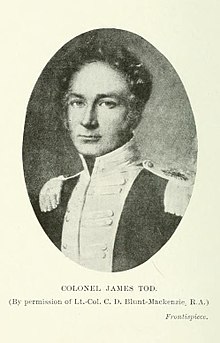



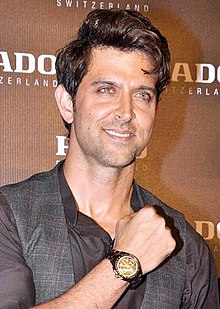




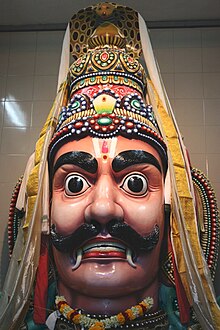



















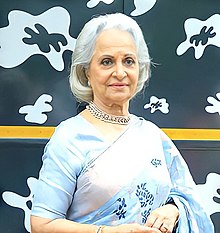

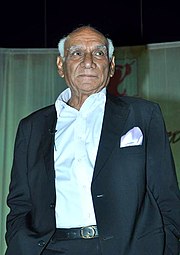

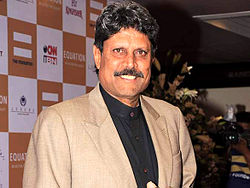


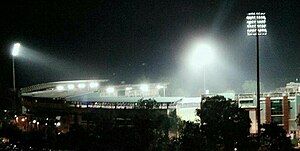





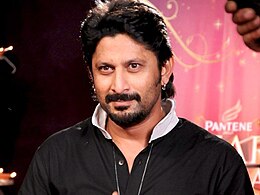









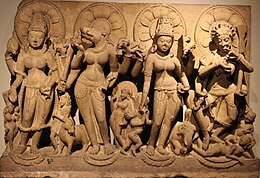


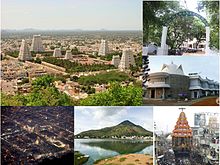
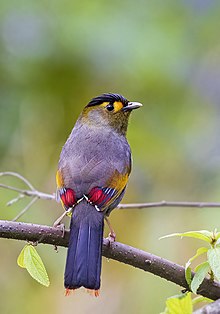
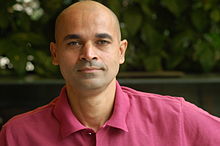
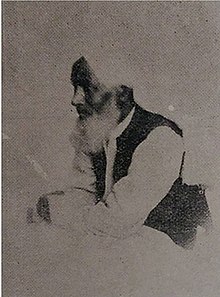


















Recent Comments